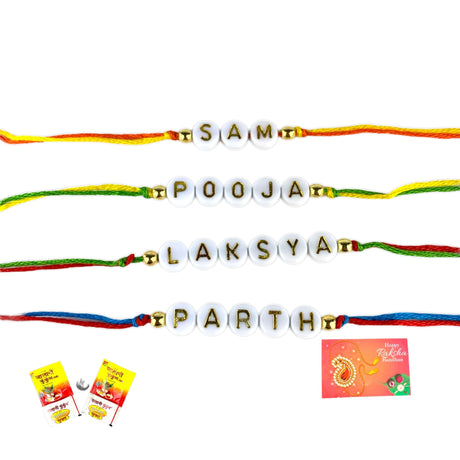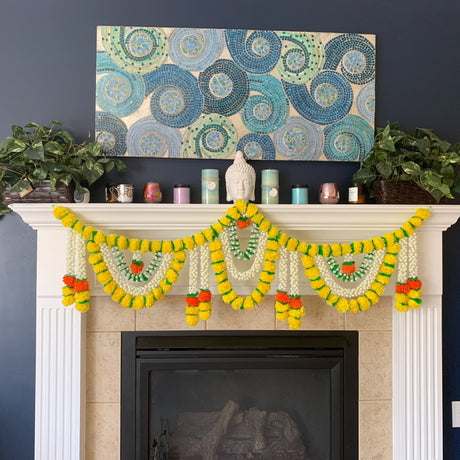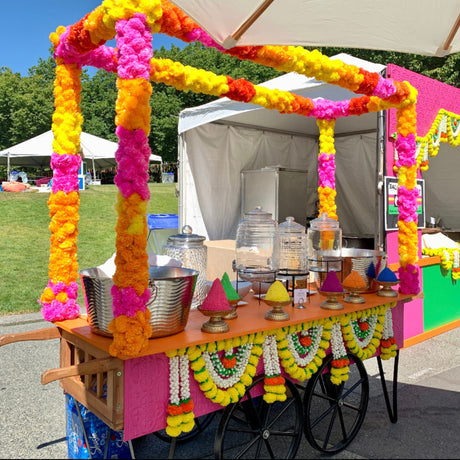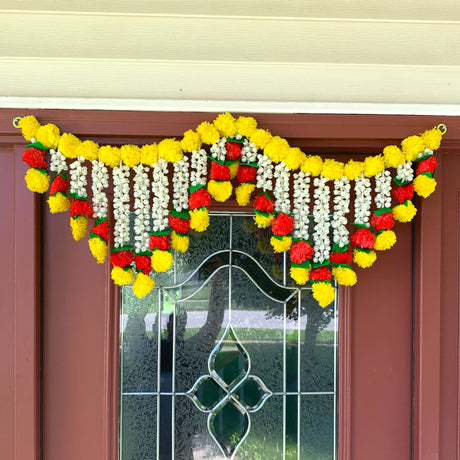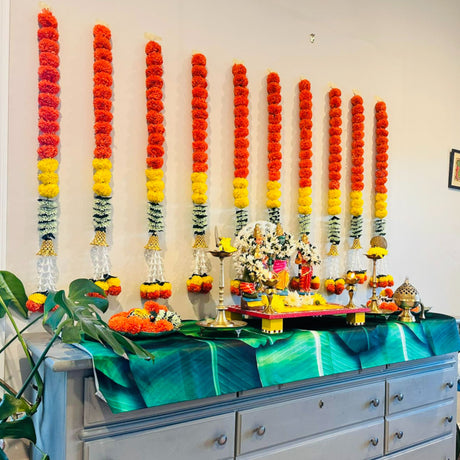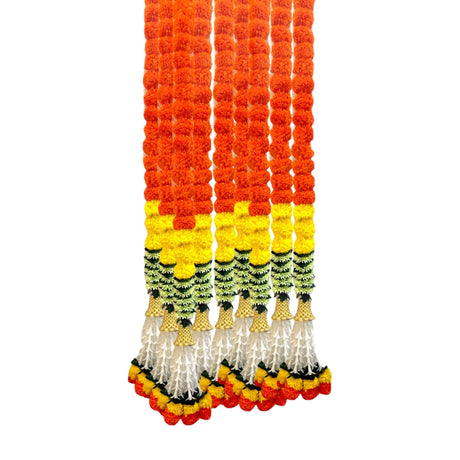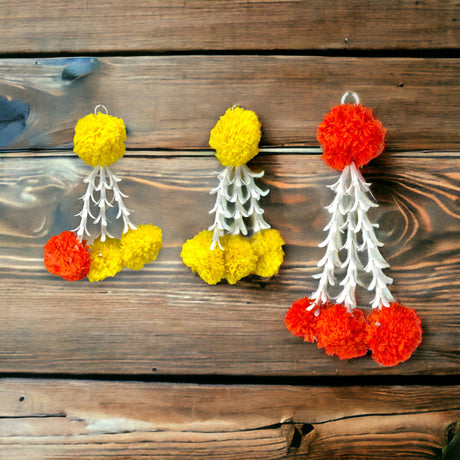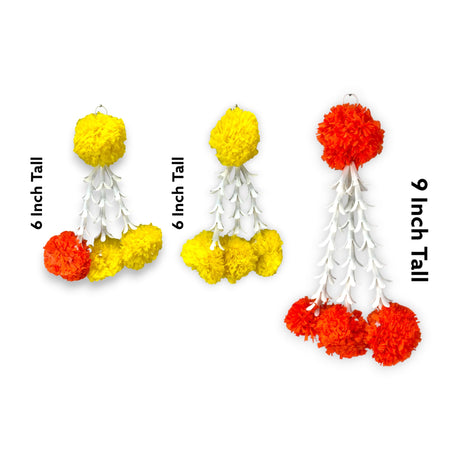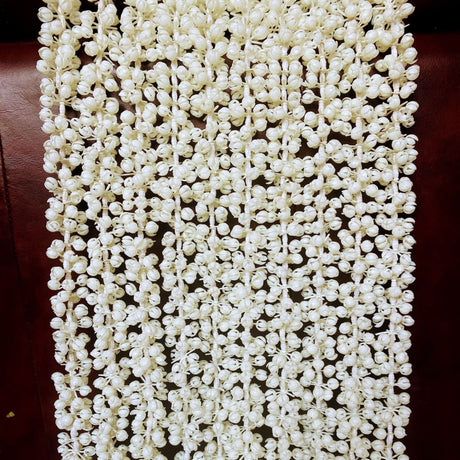I. Introduction
Varalaxmi Pooja is a special festival celebrated by Hindus in the states of Karnataka, Andhra Pradesh, and Telangana. It is believed that worshipping Varalaxmi on this day brings prosperity, wealth, and joy into one's life. This pooja is also known as ‘Vara Lakshmi Vratha’ or ‘Vara Lakshmi Viradham’ and is celebrated by married women in the month of Shravana (July-August). This festival is celebrated to honor Goddess Lakshmi, who is believed to bring good luck and prosperity.
A. Significance of Varalaxmi Pooja in Indian culture
Varalaxmi Pooja is an important festival in the Hindu tradition. It is believed that worshipping Goddess Lakshmi on this day will bring fortune, health, and wealth into one’s life. The pooja is also an occasion for women to offer prayers to the goddess for their families and seek divine blessings. Women pray to Goddess Lakshmi for a good husband, children, and a prosperous life. The pooja is celebrated with grandeur in the Hindu community and is considered to be an auspicious occasion for bestowing blessings on oneself and one’s family.
B. Overview of the festival and its connection to wealth and prosperity
Vara Lakshmi is thought to bring wealth and prosperity to the person who worships her. During the festival, people decorate their houses and prepare special sweet dishes such as Boorelu (a dough ball filled with coconut and jaggery) and offer it to the goddess. In some parts of India, women wear silk saris and perform songs in honor of the goddess. After this, a pooja is performed to invoke the blessings of Goddess Lakshmi and ask for wealth and prosperity. On this day, people also perform charitable acts such as distributing food to the needy and donating money to charities.
II. History and Origin of Varalaxmi Pooja
The origin of Varalaxmi Pooja can be traced back to the ancient scriptures. According to Hindu mythology, Goddess Lakshmi appeared on the day of Shravana and was pleased with prayers offered by King Kubera, thereby granting him wealth and prosperity. Since then, worshipping Goddess Lakshmi on this day has become a tradition in Indian culture.
A. Mythological background of Varalaxmi Pooja
In Hindu mythology, Goddess Lakshmi is the goddess of wealth and prosperity. During the month of Shravana, she is believed to make her presence known on earth in order to grant boons and blessings to her devotees. It is said that worshipping her will bring success and good fortune to those who offer their prayers with sincerity and devotion. According to the scriptures, she is also believed to grant wealth, health, prosperity, peace of mind, and success in all fields of life. Varalaxmi Pooja is celebrated on the Friday before the full moon day during Shravana. It is considered to be an auspicious occasion for bestowing blessings on oneself and one’s family
B. Cultural significance through time
Varalaxmi Pooja is an important festival celebrated in many parts of India. It has become a part of the culture and is observed with great enthusiasm and devotion. People from all walks of life come together to celebrate this day by performing poojas, singing songs, and distributing sweets. In addition, people also show their gratitude towards Goddess Lakshmi by donating
III. Preparations for Varalaxmi Pooja
The preparations for the Varalaxmi Pooja begin with the purchase of all the necessary pooja items, pooja decor Items & gifting and favors. These include flowers, incense sticks, lamps, fruits, and sweets. People also decorate their homes with rangolis and other traditional decorations to welcome Goddess Lakshmi into their homes. Additionally, people prepare a special dish called ‘Nei Payasam’, which is an offering to the goddess. On the day of Varalaxmi Pooja, people perform a special pooja in their home worshiping Goddess Lakshmi and seeking her blessings for health, wealth, and success. At the end of the pooja, devotees distribute sweets among family members and friends as a sign of thanksgiving.
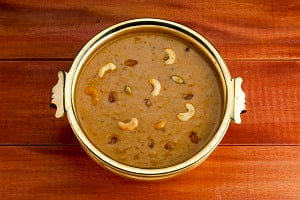
A. Items required for the pooja
The items required for the pooja include a trident, coconut, flowers like jasmine and marigold, camphor, incense sticks, lamps filled with ghee (clarified butter), fruits, milk or curd as an offering to Goddess Lakshmi. Also necessary are betel leaves and nuts to be offered during the pooja.
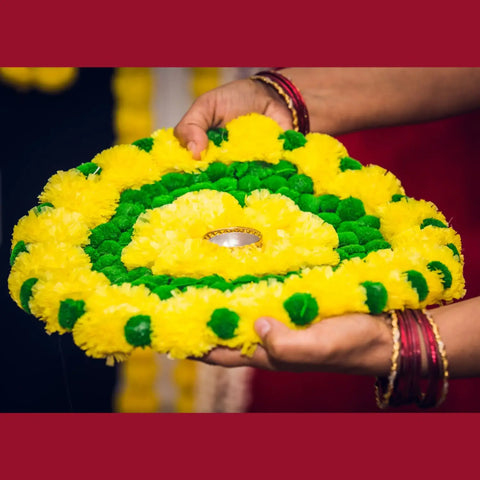
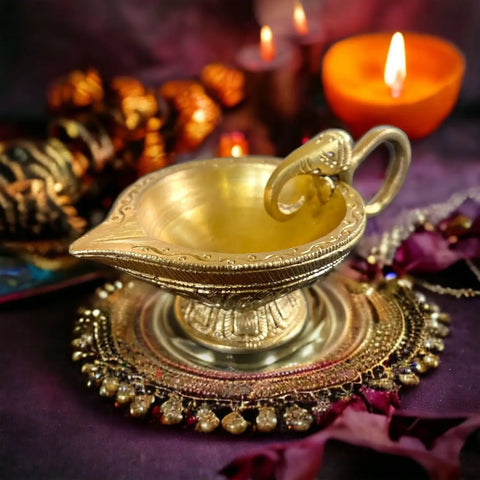
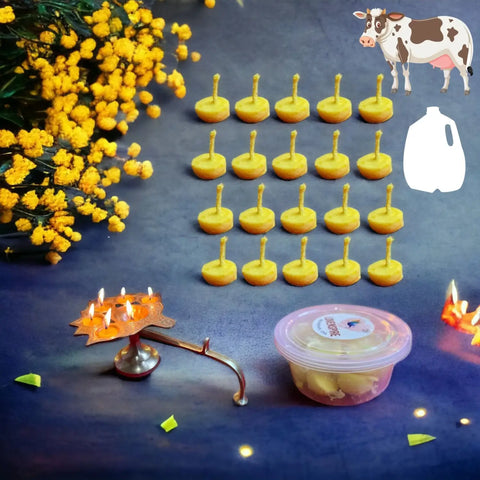
B. Setting up the pooja space
The pooja space should be clean and free from any clutter. A small table is placed in the middle of the room where all the pooja items are kept. The trident is placed at the center of the table. All other items are arranged around it to complete the setup for Varalaxmi Pooja.
After setting up the pooja space, devotees should begin chanting mantras and shlokas dedicated to Goddess Lakshmi. The entire family then performs aarti (ritual of worship) for the goddess in order to receive her blessings. After performing the puja, everyone partakes in a special feast while enjoying festive songs, music, and dance. They also exchange gifts with each other and pray for a prosperous life.
C. Rituals and customs followed during the preparation
The day before Varalaxmi Pooja is called ‘Yellu Utsava’. On this day, women in the house prepare a special dish using yellow ingredients like turmeric, banana, and jaggery. This dish is offered to the goddess during the pooja as an offering of thanks for all her blessings.
IV. The Varalaxmi Pooja Ceremony
On the day of Varalaxmi Pooja, devotees wake up early and take a ceremonial bath. They then dress in festive attire and assemble in the pooja room to begin the puja ceremony.
The first step is invoking Goddess Lakshmi by chanting mantras from Vedas (ancient Hindu scriptures). This is followed by offering flowers and fruits, and reciting Lakshmi Sahasranam (a thousand names of Goddess Lakshmi). After this, a lamp is lit to symbolize the presence of Goddess Lakshmi. This lamp is kept lit throughout the ceremony as an offering to the goddess.
After offering prayers and obeisances to Goddess Lakshmi, devotees then offer their thanks by presenting the goddess with various food items like honey, jaggery, curd, butter, and fruits. They then offer a special yellow-colored dish (Yellu Utsava) which is prepared on the day before the puja.
A. Step-by-step guide to performing the pooja
1. Place an image or statue of Goddess Lakshmi on the altar.
2. Prepare a plate with flowers, fruits, sweets, and other offerings to the goddess.
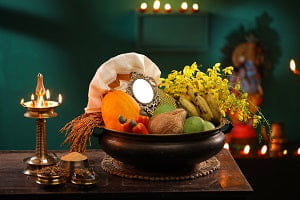
3. Light a lamp in front of the goddess and keep it lit throughout the ceremony.
4. Chant mantras from Vedas or recite Lakshmi Sahasranam to invoke the goddess.
5. Offer thanks and prayers to Goddess Lakshmi.
6. Offer food items like jaggery, curd, butter, honey, and fruits to the goddess as an act of gratitude.
7. Present the special yellow-colored dish (Yellu Utsava) prepared on the day before to the goddess.
8. Offer Aarti to the goddess and receive her blessings.
9. Distribute prasadam (blessed food) among friends and family members.
10. Conclude the pooja by chanting shlokas of Goddess Lakshmi, offering thanks for her blessings and showering peace on all.
B. Importance of various rituals in the ceremony
1. Invoking the goddess through mantras and chanting of Lakshmi Sahasranam is important as it symbolizes seeking blessings from the divine.
2. Offering flowers, fruits, sweets, and other offerings to Goddess Lakshmi signifies expressing our gratitude for her presence in our lives.
3. Lighting a lamp before the goddess represents bringing in divine light and positivity into our lives.
4. Presenting the special yellow-colored dish (Yellu Utsava) is believed to bring good luck, prosperity, and abundance.
5. Performing Aarti for Lakshmi is a way of thanking her for all that she has given us.
V. Traditional Food and Offerings for Varalakshmi Pooja
1. Offerings to the goddess such as fruits, flowers, and sweets are traditional during Varalaxmi pooja.
2. The special yellow-colored dish (Yellu Utsava) made of sesame seeds is a must-have offering as it symbolizes prosperity and abundance.
3. Other traditional dishes such as sundal, pongal and kheer are also prepared as prasadam for the goddess.
4. Make traditional snacks like murukku, sevaiyan, ladoo and mix them with jaggery to make it special offering to the goddess.
5. Don't forget to offer a glass of honey as it is believed that Varalakshmi loves sweet things.

Special dishes prepared for Varalaxmi Pooja
1. Sweet dishes like paal poli, adhirasam and paayasam are usually prepared to make the pooja more special.
2. Spicy snacks including masala vada, bajji and bonda can also be prepared for offering to the goddess.
3. Festive dishes such as bisibele bath and akki rotti are also specially prepared for this occasion to honor the goddess.
4. Traditional rice-based dishes like tamarind rice, vegetable biryani, lemon rice and curd rice are also cooked during Varalakshmi pooja.
5. Rava kesari is another special offering during the occasion as it is believed to bring good luck and luck.
VI. Varalaxmi Pooja and its Social Impact
1. Varalaxmi pooja is an important festival that is celebrated in many parts of India and abroad with great enthusiasm.
2. This occasion brings people together from different backgrounds and cultures and helps in strengthening the social fabric of our society.
3. In rural areas, this day marks the beginning of a new harvest season or year, making it an important day in the agricultural calendar.
4. This festival also teaches us to be kind and generous towards those who are less fortunate than us and encourages us to help them in any way we can.
5. Varalaxmi pooja is a reminder of our social responsibility to care for all living beings,
A. Empowerment of women through the festival
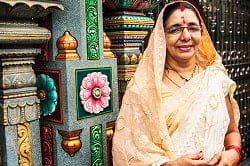
1. This festival also acts as a platform for the empowerment of women, since it is believed that Varalaxmi can grant wishes and bring wealth and prosperity to those who worship her with devotion.
2. On this day, many women take part in discussions and activities related to traditional arts and crafts which instills confidence in them to do something productive.
3. It is also an opportunity to share traditional knowledge and skills among women so that they can become self-sufficient in their lives.
4. Varalaxmi pooja helps women have a sense of belonging, as it brings all the members of the family together on this joyous day of celebration.
B. Building community connections and harmony
1. Varalaxmi pooja is also a great way to build community connections and foster harmony.
2. People from different faiths come together on this day to celebrate and offer their prayers for the well-being of all living beings in the world.
3. This festival also serves as an opportunity to build bridges between communities, as people of different religions come together and celebrate the divine feminine power.
4. This festival also promotes peace, harmony, and understanding among people, which is essential for a harmonious society.
5. It helps bring about mutual respect and appreciation for each other’s cultural backgrounds by creating an atmosphere of love and acceptance amongst all members
C. The role of charity during Varalaxmi Pooja
1. Varalaxmi Pooja is also a time of giving back to society and helping those in need.
2. On this day, many people donate money and items to charities or organizations which help the less fortunate sections of society.
3. This helps create an atmosphere of compassion and kindness, as people come together to give back to society.
4. By doing this, people can share their blessings with those who are less fortunate and create a sense of unity and togetherness within the community.
5. This also helps in instilling values of selflessness and charity among members of society, which is essential for creating a harmonious environment.
VII. Conclusion
Varalaxmi Pooja is a great way to celebrate the divine feminine power, build community connections, promote peace and harmony, and do charity for those in need. This festival encourages people to come together and share their blessings with those who are less fortunate while also celebrating the significance of the divine feminine power. It serves as an opportunity to foster understanding and appreciation amongst members of different religious backgrounds, while also helping to create a sense of unity and togetherness within the community. All in all, Varalaxmi Pooja is an important festival that has many spiritual and social benefits.
Varalaxmi Pooja is a great way to celebrate the divine feminine power, build community connections, promote peace and harmony, and do charity for those in need. We invite all readers to take part in this wonderful festival and share their blessings with those who are less fortunate while also celebrating the significance of the divine feminine power. All in all, we encourage everyone to partake in this wonderful event and help foster understanding and appreciation amongst members of different religious backgrounds, while also helping to create a sense of unity and togetherness within the community.













